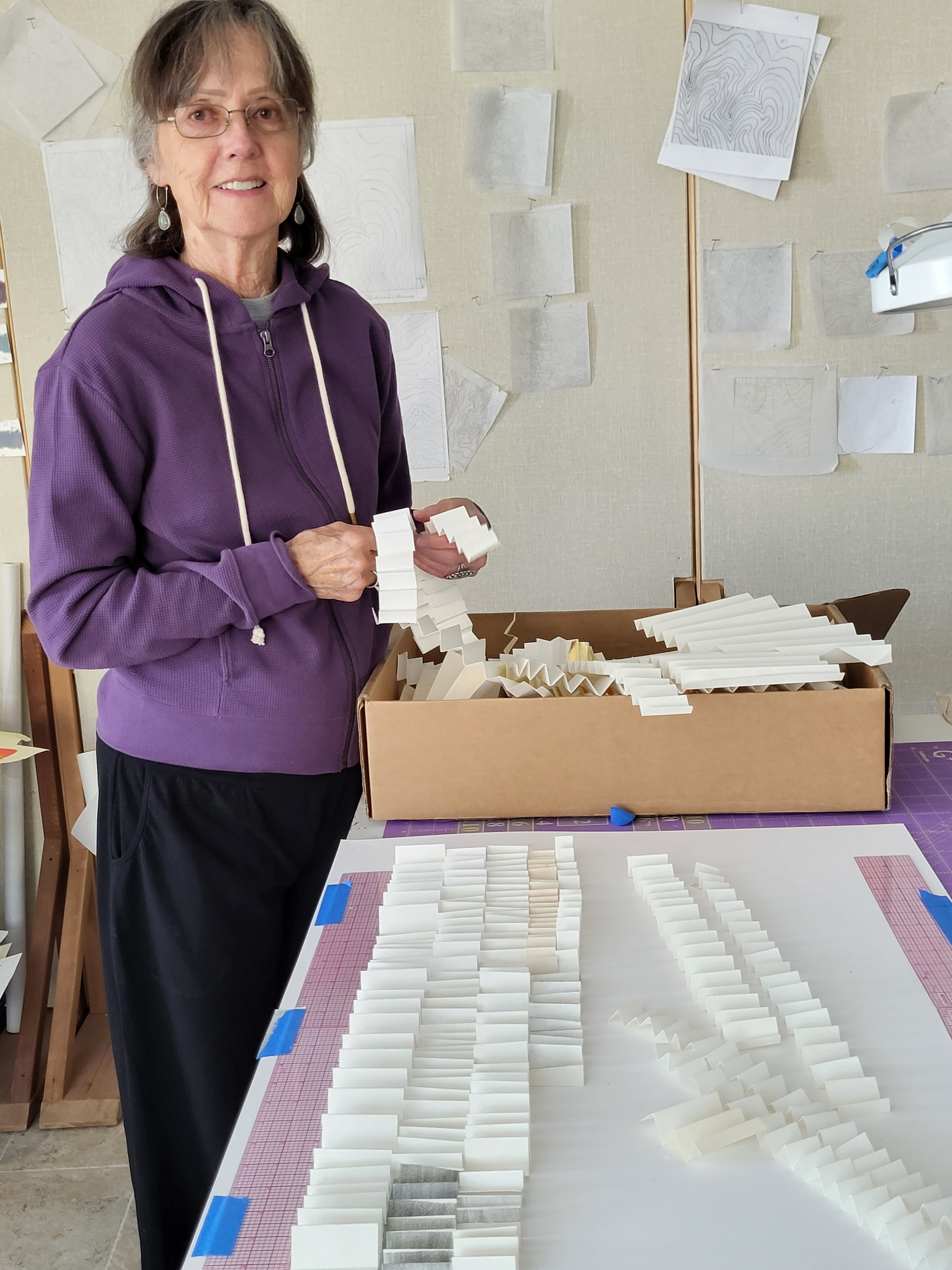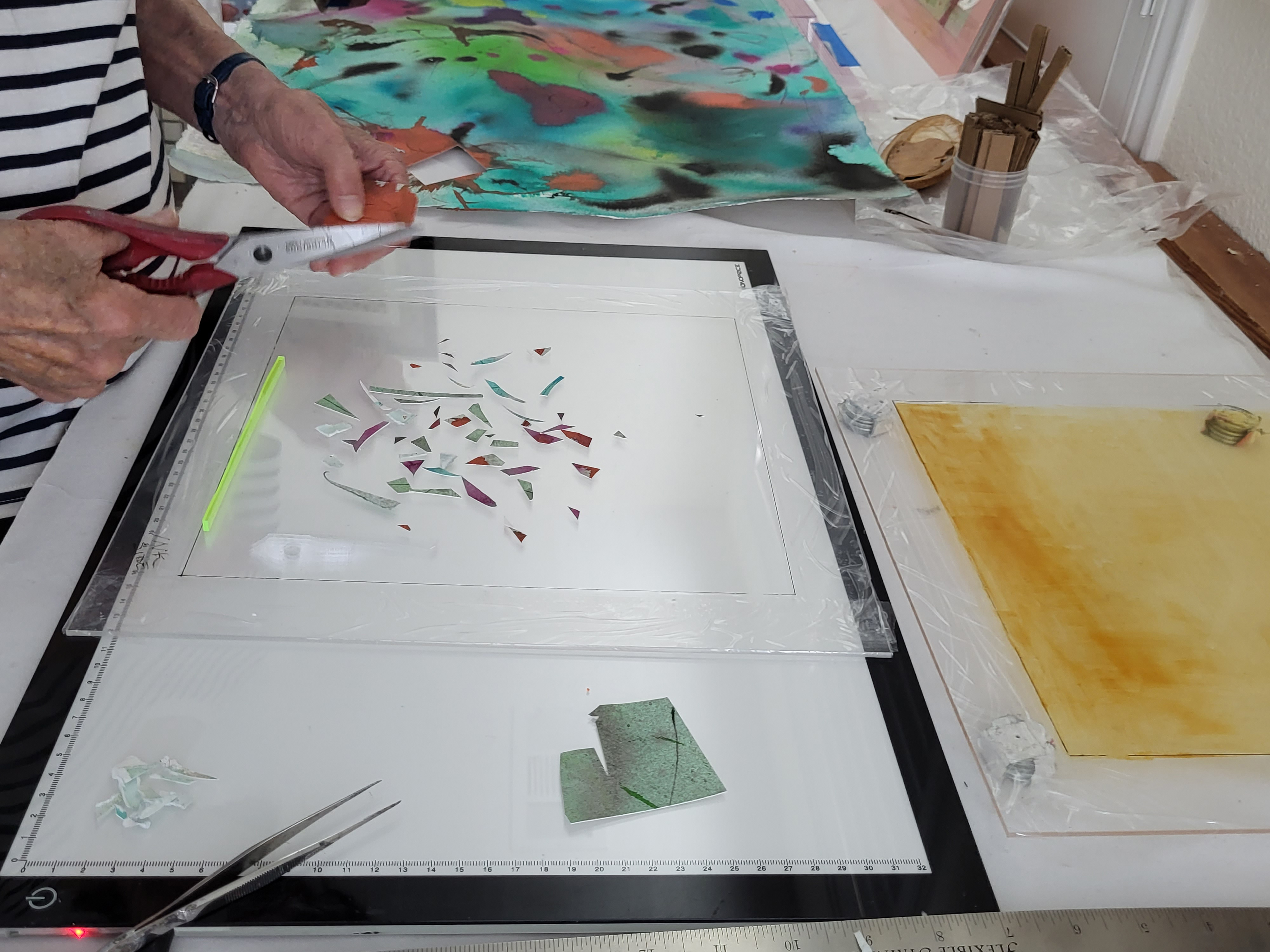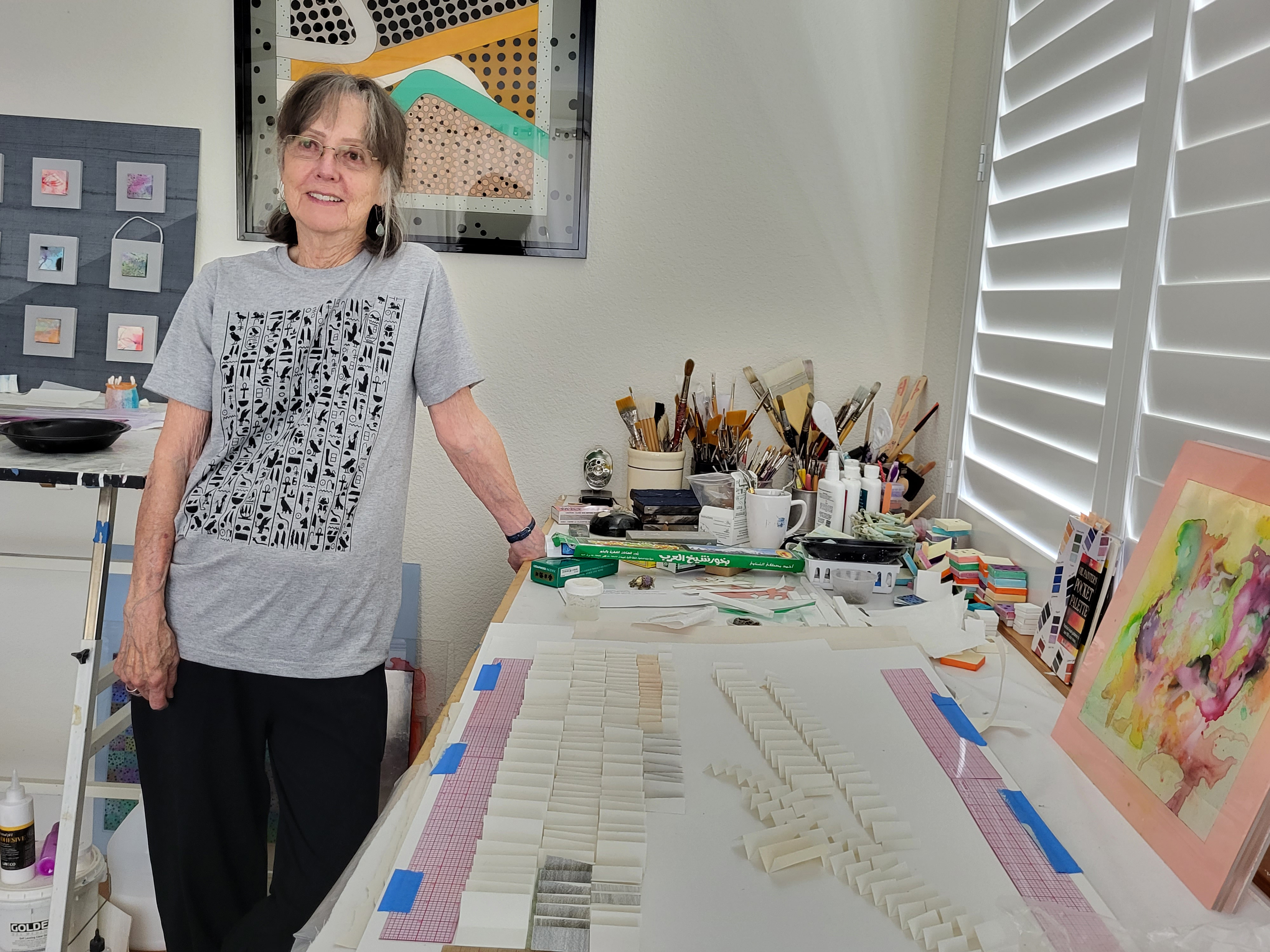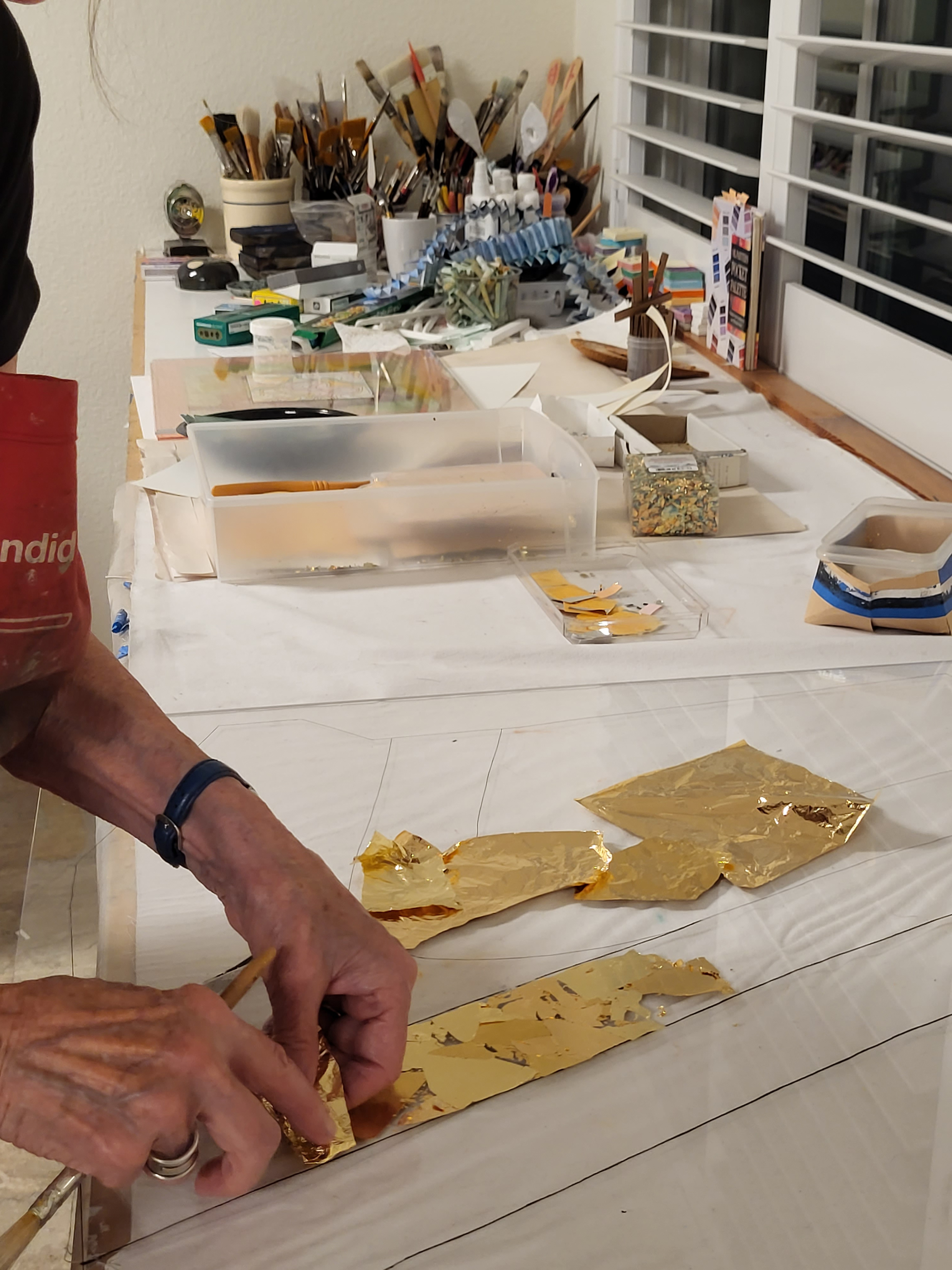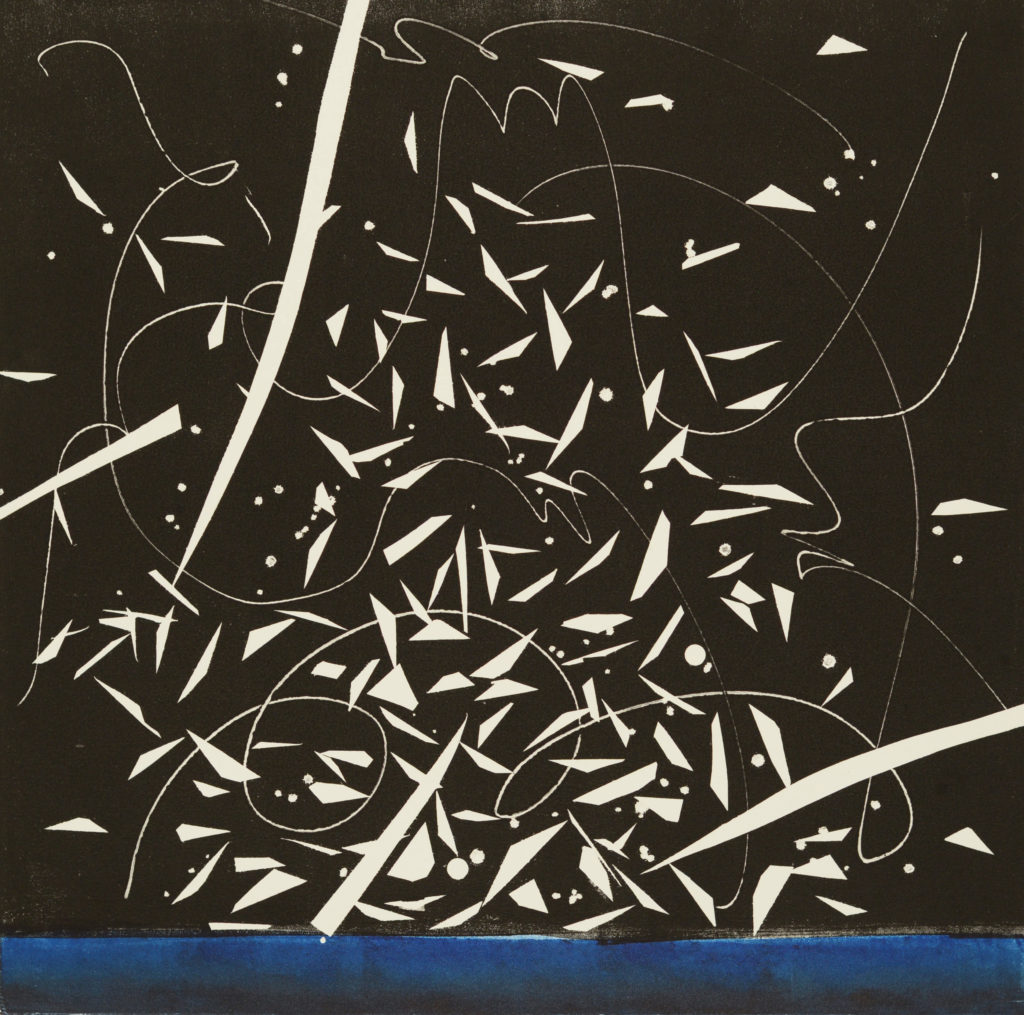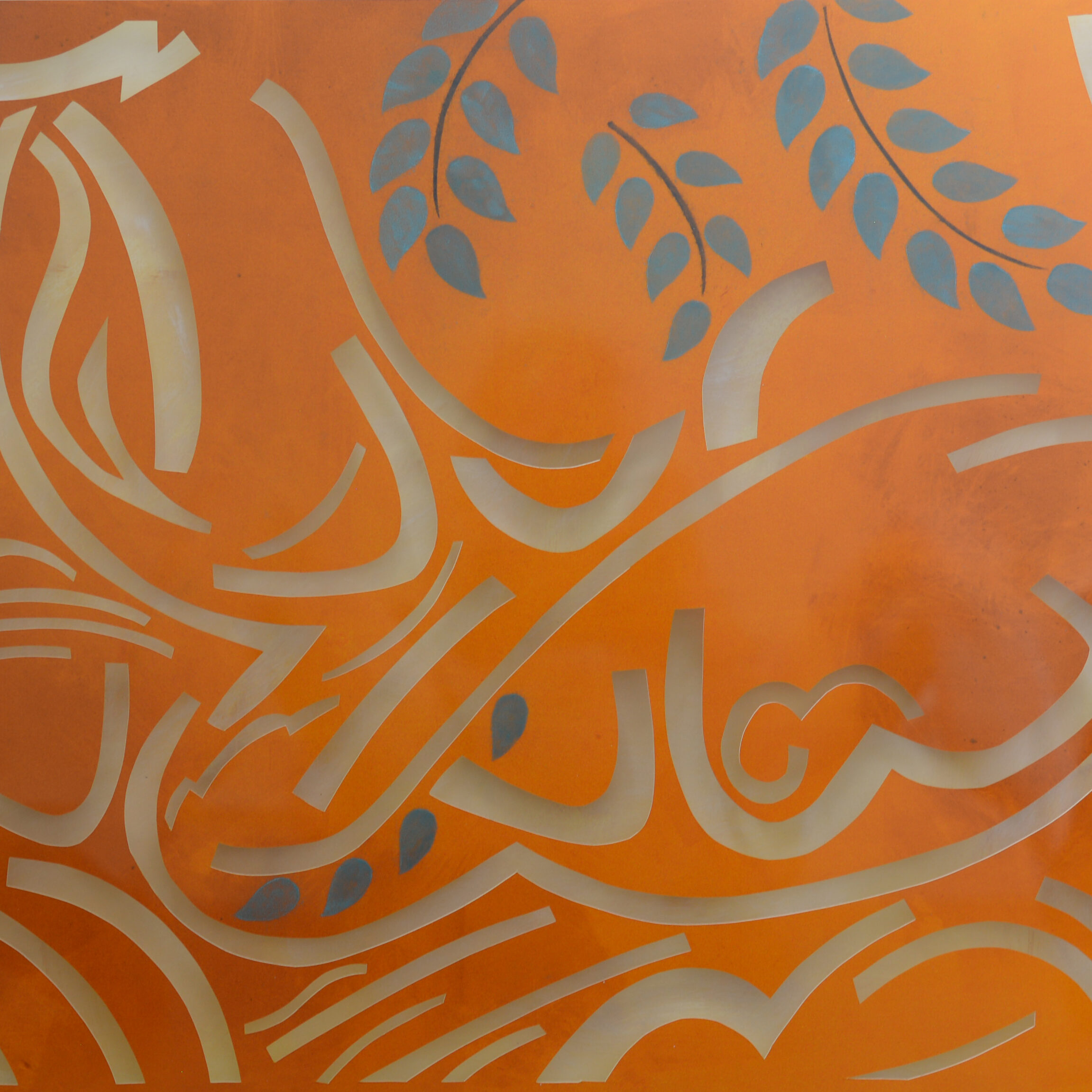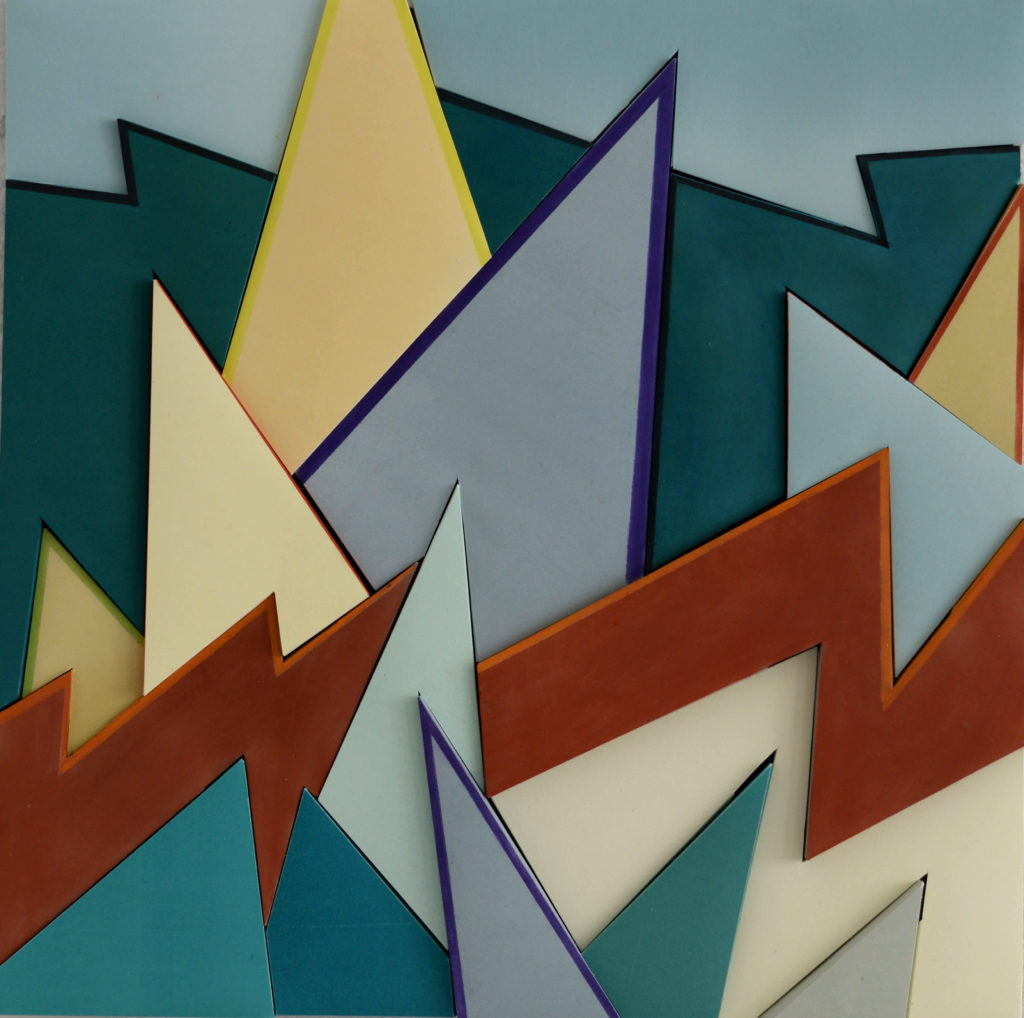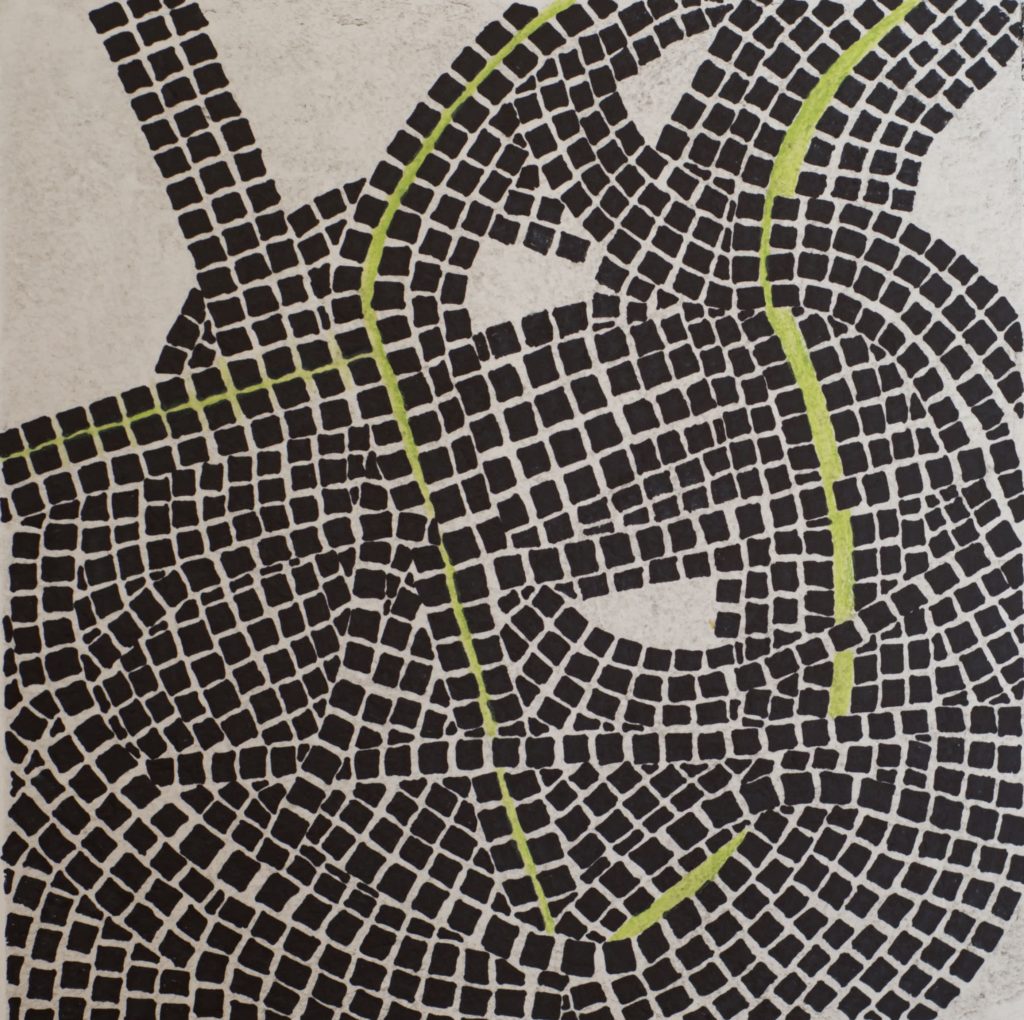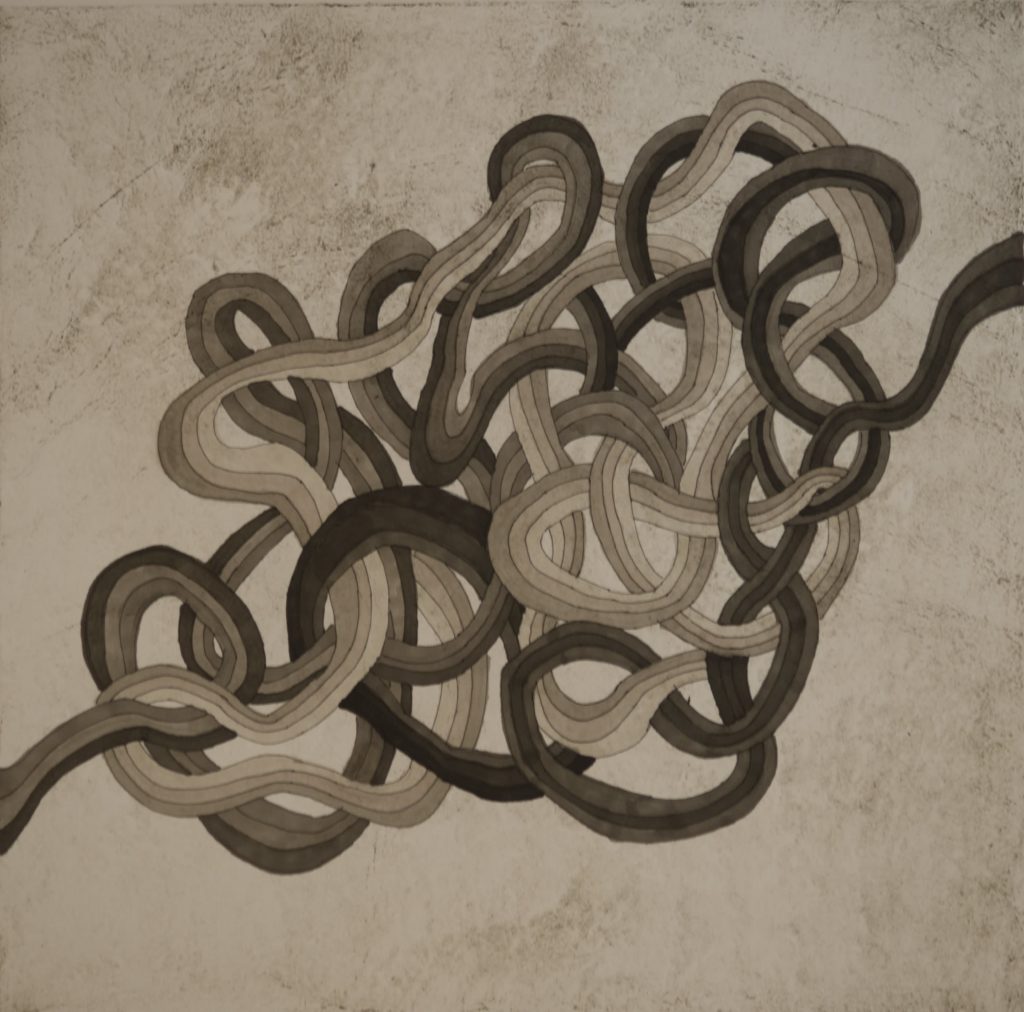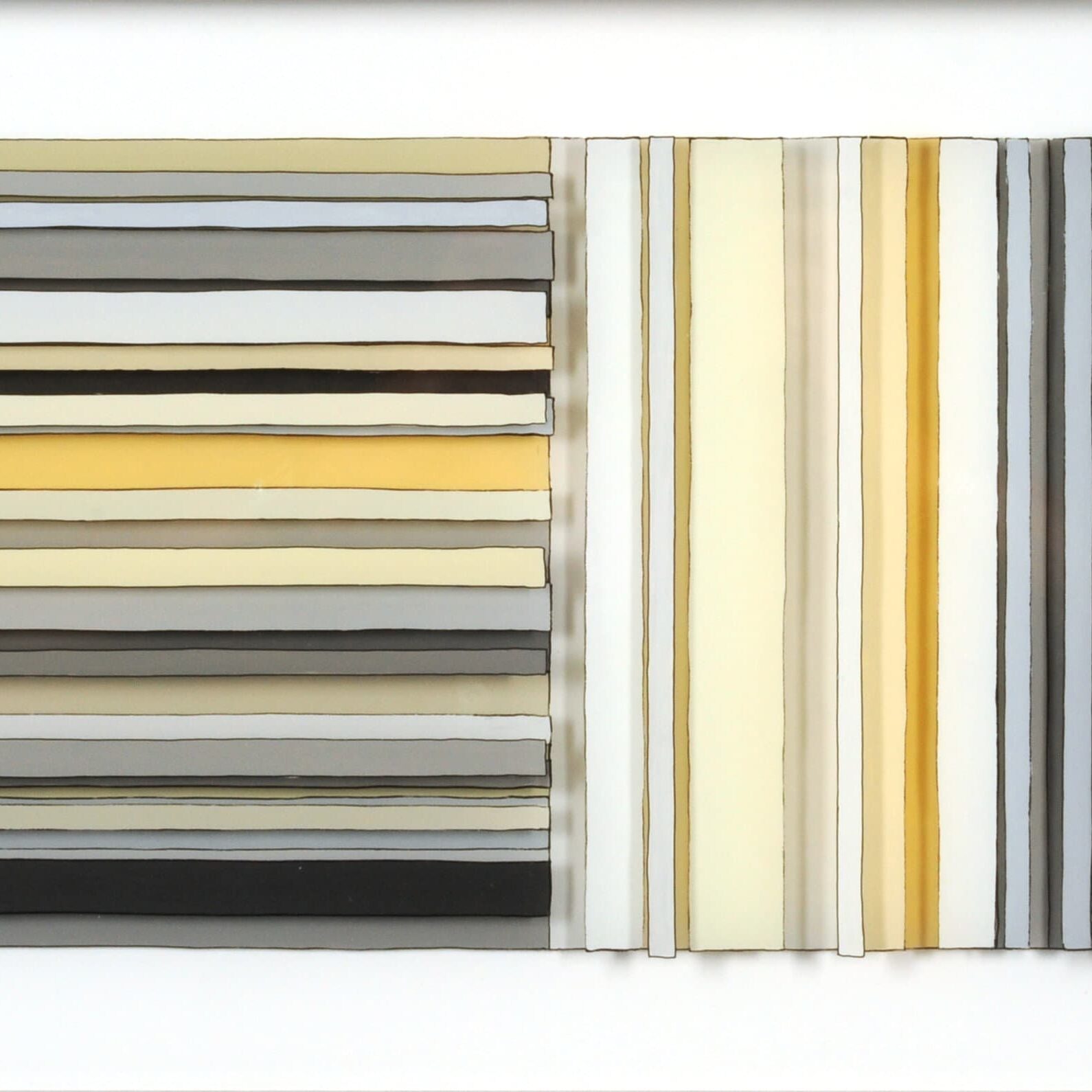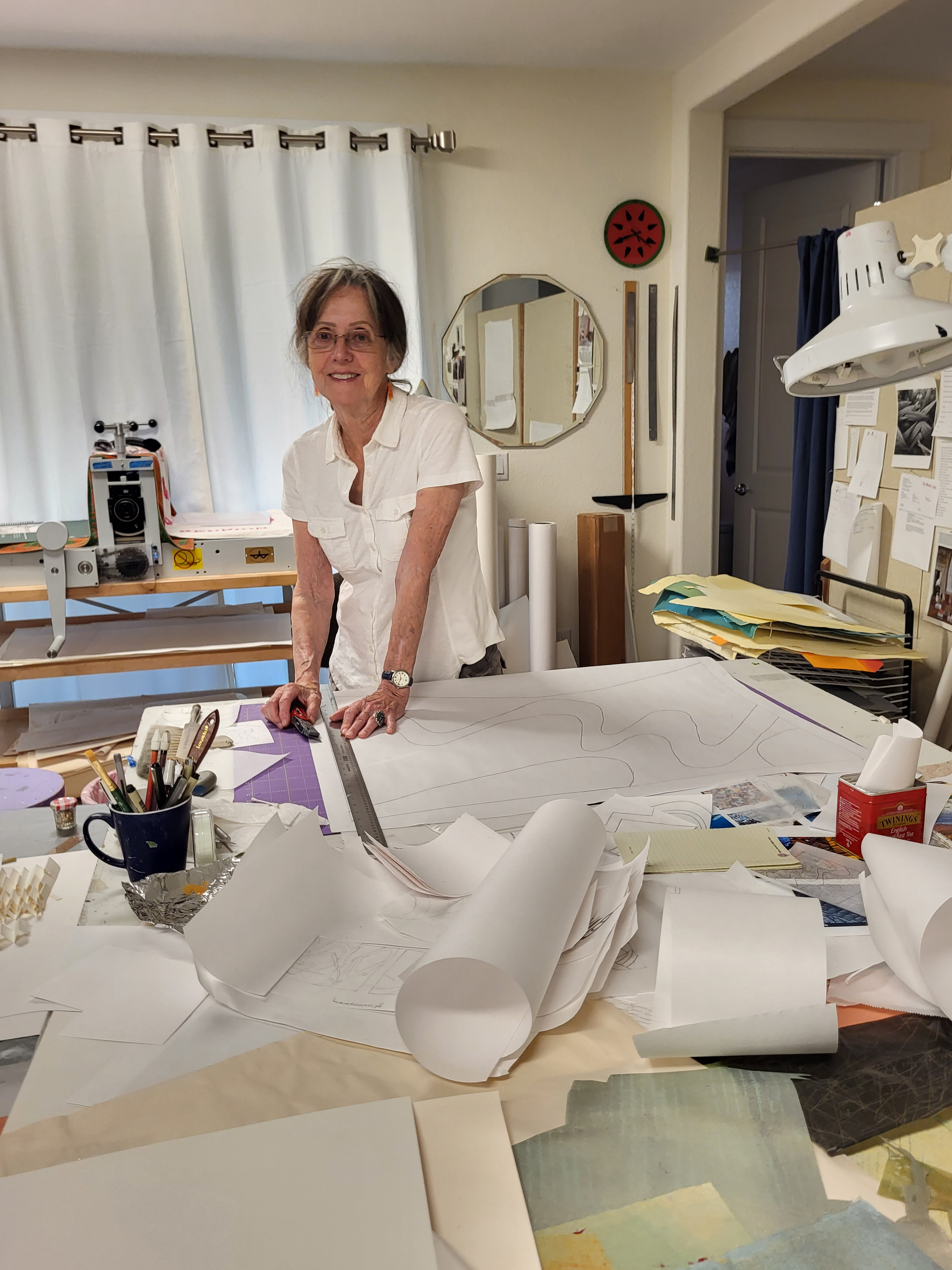
In the Studio with Irene Yesley
July 5th, 2023
Multimedia artist Irene Yesley virtually sat down with us to discuss the details of her creative process and influences. Yesley’s body of work ranges from the soothing monotone patterns, to expertly controlled linework drawings, to fields of irregular strips of color. Yesley is influenced by the people she knows, other artists, and her surroundings particularly that of New Mexico where she worked for a time as a fiber artist. Using a broad array of media and supports, Yesley’s work explores shapes, patterns, colors, as well as positive and negative space without the limitations imposed by the reproduction of a specific image.
Why do you make art?/ What thoughts go through your mind when you create?
For me, making art is a kind of meditation, it requires all my attention which effectively shuts out the chaos of everyday life. I realize the importance of working in my studio when I am not working there. The strange thing is, making art is not a calm process, there are many long moments of frustration and sometimes feelings of hopelessness but then there is also the happiness of success when getting some part right.
Describe the concepts/motivations behind your work/creative process.
As an artist, I am concerned with the visual aspect of the work I make but I do not want my work to resemble the world around me, nor do I normally paint some type of narrative
The things that concern me when I am working are the values, the shapes and the spaces between them, and the colors. I like working abstractly because it gives me more options. The official name for concerns only about color, value, shapes and spaces is Formalism.
I have an affinity for repeating patterns. I like to use similar shapes and figure out ways for them to almost, but not perfectly, repeat.
Sometimes I get an idea of a broad theme I want to follow. Recently, after reading about microplastic, I decided to do a series on that topic. One of the reasons this topic appealed to me is it would mean using a lot of small shapes and arranging them in interesting patterns.
Once I have an idea, which can come from the world around me or from materials that I would like to use, the heart of the creative process begins when I am actually in the process of making a piece with one idea leading to the next.
Why/How have you chosen your medium? Which creative medium would you love to pursue but haven’t yet?
I often paint on plexiglass because I like its transparency which allows me to work on two or three layers and then stack one over the other to make a single piece. The transparency of the layers adds actual dimension to wall piece of art.
Working on plexiglass has its share of challenges. It is called reverse painting, you work on the back side of the plexiglass and look at the piece from the front side. The first mark put down is what shows, any additional layers of paint or ink on top of that first mark will not change what is visible from the front side. This also means it is a good idea to have a plan before starting. When painting on a canvas or board, I can easily paint over parts I want to change but when changing ideas on plexiglass, the original paint must be removed to make the plexiglass clear again.
What artist(s) or movement(s) have influenced your work?
The small, pattern and mark making of Bruce Conner encouraged me to go ahead with work that involved a lot of pattern making. I like the organic quality of Eva Hesse and Stuart Arends’ pieces and, at the same time, the minimalism of Donald Judd. As my work changes and I use different materials, I look at how other artists approach their work using similar materials

